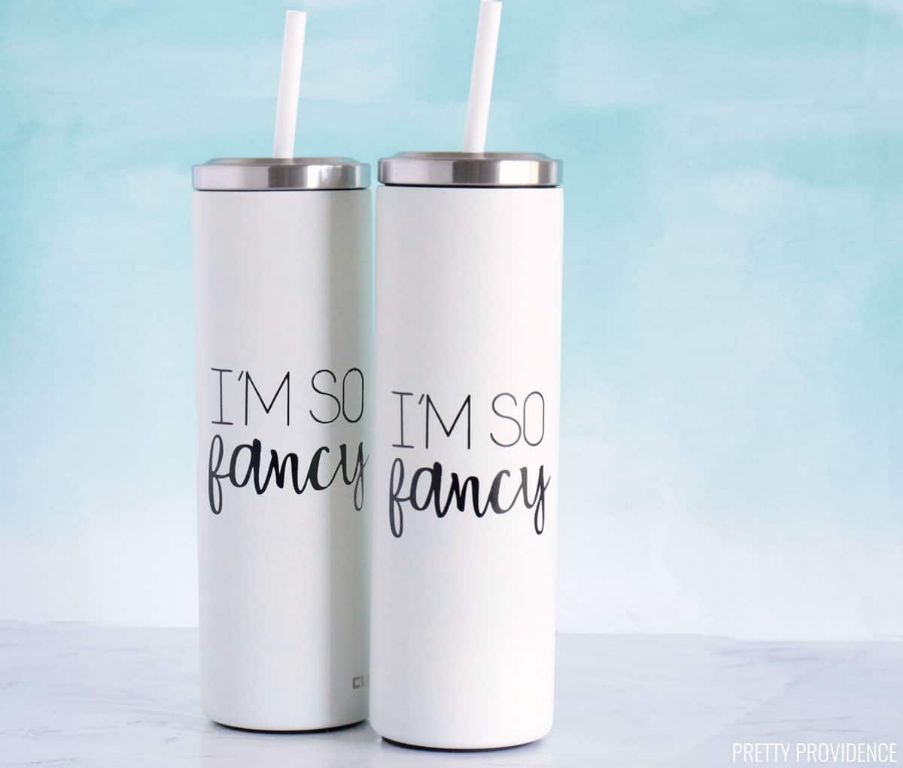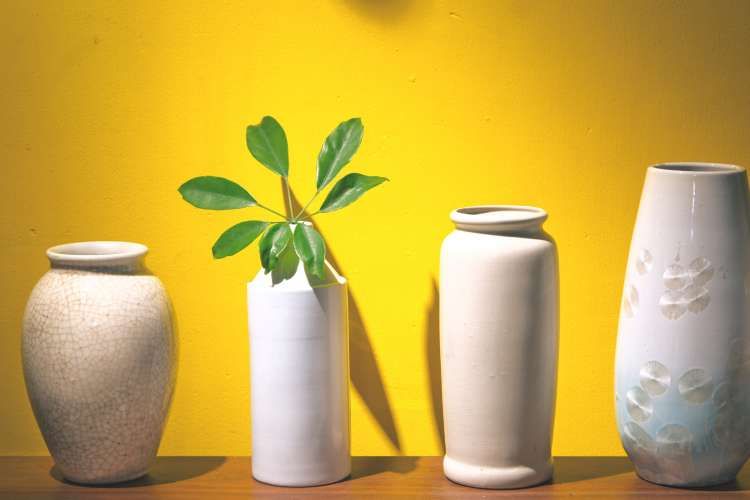Is Transfer Paper The Same As Decal Paper?
Defining Transfer Paper
Transfer paper is a special type of paper coated with a preparation that allows images printed on it to be transferred onto other surfaces like wood, plastic, glass, and more. According to the Merriam-Webster dictionary, transfer paper is defined as “a paper that is coated with a preparation for transferring a design to another surface.”
Essentially, transfer paper allows you to print an image or design on the paper using a standard printer, and then transfer that image onto another surface by applying heat and pressure. The coating on the paper acts as a temporary adhesive that sticks the ink from the printer onto the final surface. This allows for customization of surfaces that cannot be fed through a printer directly, like wood plaques, mugs, and other 3D objects.
Some key features of transfer paper include:
- Coated with a waxy substance that adheres printed ink
- Allows transfer of images onto non-paper surfaces like wood, plastic, metal, glass
- Requires application of heat and pressure to transfer image
- Produces a permanent transferred image
- Allows customization of hard surfaces that cannot be printed on directly
Defining Decal Paper
Decal paper, also known as waterslide paper or sticker paper, is a type of water resistant paper that allows the transfer of images or designs onto various surfaces. According to https://www.sunnyscopa.com/blogs/everything-decal-paper/why-decal-paper-is-better-than-transparency-film, decal paper consists of an image layer and backing layer. The image layer contains the actual design or image that can be peeled off the backing layer and applied onto another surface with water.
Once the image layer is separated from the backing layer and soaked in water, it turns into a sticky decal that can then be positioned and applied onto surfaces like metal, plastic, glass, walls, tiles, etc. The water allows the decal to slide into position. As the water evaporates, the decal adhesive activates, sticking the image permanently onto the surface like a sticker.
Decal paper allows you to create custom decals, stickers, and transfers for a wide variety of DIY projects. The key advantage is the ability to apply images and designs as a sticker without needing glue or other adhesives.
Key Differences Between Transfer Paper and Decal Paper
The main difference between transfer paper and decal paper is in how the image is applied to the surface. Transfer paper chemically bonds the image to the surface, while decal paper applies the image like a sticker.
With transfer paper, the image is printed in reverse on special transfer paper coated with a heat-activated adhesive. When heat and pressure are applied, the adhesive activates, causing the ink to release from the paper and bond to the receiving surface like a dye. This creates a permanent, embedded image on the surface.https://colorcraftvinyl.com/blog/vinyl-transfer-tape-vs-transfer-paper/
Decal paper allows the image to be applied to a surface like a sticker. The image is printed in correct orientation on the decal paper. The decal is then soaked in water which loosens the paper backing so it can slide off, leaving the sticker-like decal to transfer to the surface. Decals adhere but do not chemically bond, so they can be repositioned or removed intact.https://drytransferletters.com/difference-between-dry-transfers-and-waterslide-decals/
Uses of Transfer Paper
Transfer paper is commonly used for applying images and designs to various surfaces such as wood, plastic, metal, and glass. The transfer occurs when the paper is placed print-side down on the surface and activated with heat from an iron or heat press. The combination of heat and pressure causes the printed design to release from the paper and adhere to the surface.
Some common uses of transfer paper include:
- Applying designs to t-shirts, bags, hats, and other textiles
- Adding images and graphics to wood surfaces like DIY signs and decor
- Personalizing mugs, phone cases, and other smooth plastic items
- Decorating metal surfaces like toolboxes, lunchboxes, and jewelry
- Etching monograms, logos, or artwork onto glassware or mirrors
Transfer paper allows crafters and DIYers to easily customize a variety of surfaces with their own designs. It transfers images very smoothly compared to freehand painting or drawing. Overall, it’s a versatile decorative tool for personalizing everyday objects.
Uses of Decal Paper
Decal paper allows you to apply images and designs like stickers onto various surfaces. Some common uses of decal paper include:
Applying graphics and images onto mirrors, windows, laptops, walls, and other smooth surfaces as decorative stickers. The decals can include patterns, photos, quotes, or custom designs (Crafty Computer Paper).
Adding cartoon characters, logos, monograms, and other graphics onto mugs, glassware, bottles, ceramics, and other items. The image transfers onto the surface during baking. This allows for customizing drinkware with unique designs (Mr Decal Paper).

Creating durable water slide decals to add visual flair onto cars, motorcycles, boats, snowmobiles, ATVs, surfboards, skateboards, and helmets. The decals provide a smooth and seamless graphic that adheres well to the vehicle’s surface.
Printing out small stickers, cards, and magnets using decal paper inkjet printers. These customized stickers can have photos, text, clipart, or any design imaginable.
Making custom signs, banners, posters, arts and crafts by printing out designs and sticking them onto wood, metal, plastic, glass, cardboard, and more. The decals create print quality images without needing paint.
Advantages of Transfer Paper
One of the main advantages of transfer paper is that it permanently bonds the image to the surface. The ink from an inkjet or laser printer is printed in reverse onto the coated transfer paper. When heat and pressure are applied, a chemical reaction takes place that adheres the ink to the fabric or other surface. This creates a lasting bond that is resistant to peeling, cracking or fading over time, even after multiple washes and wears. Transfer paper allows you to easily customize a variety of surfaces like t-shirts, wood, metal, plastic, ceramic and more with a permanent image.
According to this source, transfer paper creates a soft hand feel, unlike materials like vinyl that may feel stiff or plasticky on the surface. The transferred design has good stretch and flexibilty as well for comfortable wear. Transfer paper is also very user-friendly and accessible for hobbyists and crafters to create custom designs at home.
Disadvantages of Transfer Paper
One of the main disadvantages of transfer paper is that it is single use. Once the image or design has been transferred, the transfer paper cannot be reused. This means any mistakes or need for repositioning result in wasted transfer paper 1. With screen printing, the screens can be reused over and over, minimizing waste.
Transfer paper also locks you into whatever position the design was placed initially. There is no ability to reposition or adjust the design once transferred. Screen printed designs can be reprinted in a new position or layout as needed. So if alignment or placement needs tweaking, new transfer paper sheets would need to be printed and applied.
The single use nature and lack of repositioning ability are notable disadvantages of transfer papers compared to screen printing methods. This can lead to higher waste and less flexibility during the application process.
Advantages of Decal Paper
One of the biggest advantages of decal paper is that decals are repositionable and reusable (source: https://www.decals.com/blog/benefits-of-custom-sticker-sheets). Unlike transfer paper where images are permanently affixed once transferred, decals can be removed and reapplied multiple times. This makes decals great for creative projects where you may need to tweak the positioning. It also means decals can be reused in different contexts, giving them longevity.
Being able to reposition decals allows for more creativity and customization. You can move decals around until you find the perfect placement for your vision. The reusable nature also means you can update projects with new decals over time. Overall, the repositionable and reusable qualities give decal paper more flexibility compared to one-time use transfer paper.
Disadvantages of Decal Paper
One key disadvantage of decal paper compared to transfer paper is durability. According to Decals – types, pros and cons, decals do not adhere as strongly as transfers, making them more prone to peeling, cracking or scratching off over time. The backing sheet on decal paper is also not as sturdy. According to Decal or sticker material, “A disadvantage of waterslide decals is that they do not have a very strong layer of glue. Water, wind, dirt and contact can already release the decal.” So decals may not withstand the elements or wear and tear as well as transfers.
Conclusion
In summary, the key differences between transfer paper and decal paper are:
- Transfer paper uses a dry application process, while decal paper uses a wet application process.
- Transfer paper allows for positioning during application, while decals must be correctly positioned immediately.
- Decal paper results in a more permanent bond, while transfer paper can be repositioned or removed.
- Transfer paper is better for solid, opaque designs, while decal paper works for complex and translucent designs.
- Decal paper offers more versatility for different surfaces, while transfer paper works best on smooth, flat surfaces.
In determining which to use, transfer paper is ideal when adjustability and easy application is needed for simple designs on smooth surfaces. Decal paper allows for more versatility, permanence, and translucent designs, but requires care during application.
Both transfer paper and decal paper have their advantages and are optimal for certain projects. Evaluate the design, surface material, adjustability needs, and desired longevity to choose the best option for the application.


